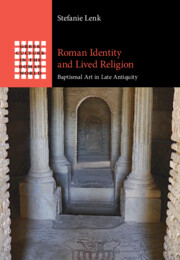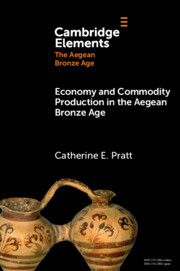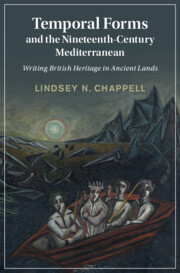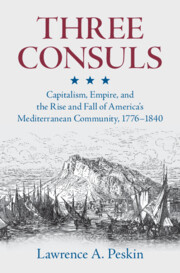Refine search
Actions for selected content:
278 results
6 - The evolution of naval warfare,1450–1650
-
-
- Book:
- The Cambridge History of War
- Published online:
- 18 July 2025
- Print publication:
- 14 August 2025, pp 170-190
-
- Chapter
- Export citation
The Relativity of fides: Faith Language, Commerce and Interreligious Trust in the Crown of Aragon, c. 1240–1350
-
- Journal:
- Transactions of the Royal Historical Society , First View
- Published online by Cambridge University Press:
- 21 July 2025, pp. 1-22
-
- Article
-
- You have access
- Open access
- HTML
- Export citation
6 - The Americans Are Coming
-
- Book:
- Warriors in Washington
- Published online:
- 23 June 2025
- Print publication:
- 10 July 2025, pp 159-179
-
- Chapter
- Export citation
Achieving Equality: Why There Was Not as Much Inequality in Prehistoric Europe as We Imagine
-
- Journal:
- American Antiquity / Volume 90 / Issue 3 / July 2025
- Published online by Cambridge University Press:
- 20 August 2025, pp. 446-466
- Print publication:
- July 2025
-
- Article
-
- You have access
- Open access
- HTML
- Export citation
Akritas Cape: a new raptor migration hot spot in the Balkans
-
- Journal:
- Bird Conservation International / Volume 35 / 2025
- Published online by Cambridge University Press:
- 19 June 2025, e19
-
- Article
-
- You have access
- HTML
- Export citation
A multi-scale approach unveils the ecology of the Critically Endangered Sardinian long-eared bat
-
- Journal:
- Oryx , First View
- Published online by Cambridge University Press:
- 25 April 2025, pp. 1-9
-
- Article
-
- You have access
- Open access
- HTML
- Export citation
Necropolitics at the Southern European Border: Deaths and Missing Migrants on the Western Mediterranean and Atlantic Coasts
-
- Journal:
- Journal of Race, Ethnicity and Politics , First View
- Published online by Cambridge University Press:
- 24 March 2025, pp. 1-17
-
- Article
-
- You have access
- Open access
- HTML
- Export citation
The North Caesarea 1 shipwreck: challenges of re-excavating a large merchantman
-
- Article
-
- You have access
- Open access
- HTML
- Export citation
Rethinking late prehistoric Mediterranean Africa: architecture, farming and materiality at Kach Kouch, Morocco
-
- Article
-
- You have access
- Open access
- HTML
- Export citation
Comparative study of fat content, profile and quality of fatty acid in three species of Carangidae of southwestern Mediterranean
-
- Journal:
- Journal of the Marine Biological Association of the United Kingdom / Volume 105 / 2025
- Published online by Cambridge University Press:
- 10 February 2025, e11
-
- Article
- Export citation

Roman Identity and Lived Religion
- Baptismal Art in Late Antiquity
-
- Published online:
- 08 February 2025
- Print publication:
- 20 February 2025

Economy and Commodity Production in the Aegean Bronze Age
-
- Published online:
- 10 January 2025
- Print publication:
- 30 January 2025
-
- Element
- Export citation
17 - Ottoman Expansionism, 1300–1823
-
-
- Book:
- The Cambridge History of Strategy
- Published online:
- 06 January 2025
- Print publication:
- 09 January 2025, pp 346-368
-
- Chapter
- Export citation
22 - Naval Strategies
-
-
- Book:
- The Cambridge History of Strategy
- Published online:
- 06 January 2025
- Print publication:
- 09 January 2025, pp 448-463
-
- Chapter
- Export citation

Temporal Forms and the Nineteenth-Century Mediterranean
- Writing British Heritage in Ancient Lands
-
- Published online:
- 09 November 2024
- Print publication:
- 14 November 2024
The prehistoric site of Oued Beht, Khémisset, Morocco: an interpretative report on 2021–2022 fieldwork and associated research
-
- Journal:
- Libyan Studies / Volume 55 / November 2024
- Published online by Cambridge University Press:
- 31 December 2024, pp. 10-47
- Print publication:
- November 2024
-
- Article
-
- You have access
- Open access
- HTML
- Export citation

Three Consuls
- Capitalism, Empire, and the Rise and Fall of America's Mediterranean Community, 1776–1840
-
- Published online:
- 31 October 2024
- Print publication:
- 21 November 2024
First record of the brachiopod Argyrotheca cuneata from a nearshore habitat at the southern coast of Türkiye
-
- Journal:
- Journal of the Marine Biological Association of the United Kingdom / Volume 104 / 2024
- Published online by Cambridge University Press:
- 26 July 2024, e57
-
- Article
- Export citation
4 - Hybrids, Contact Zones and Margins
-
- Book:
- Centaurs and Snake-Kings
- Published online:
- 16 August 2024
- Print publication:
- 25 July 2024, pp 92-135
-
- Chapter
- Export citation
